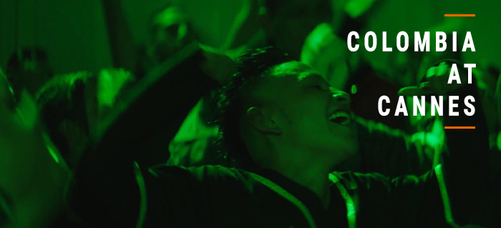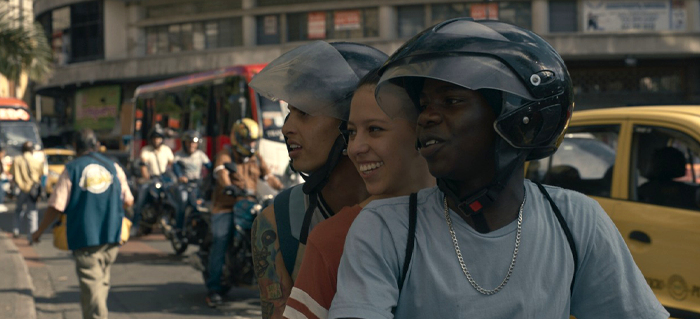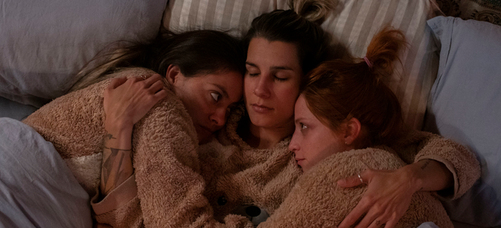
Eight productions in Chicago
Pantalla Colombia No.: 113abril 01 - mayo 31 / 2022
The 38th edition of the Chicago Latino Film Festival ended on May 1st with extraordinary Colombian participation.

The Chicago Latino Film Festival is a U.S. film festival whose focus is on Latin America and its cultures. Established in 1985, the annual event is organized by the International Latino Cultural Center (ILCC) and sponsored by several national organizations and the local Hispanic and Latino community. The Festival showcases the work of up-and-coming Latin American filmmakers focusing on films that showcase Latin America's diversity and challenge common stereotypes related to the region.
The 2022 edition featured Henry Rincón's La ciudad de las fieras (The City of Wild Beasts). The film portrays 17-year-old Tato, who, with his mother dead and his father missing in action, spends most of his time tagging buildings with graffiti and engaging in freestyle rap duels alongside friends Pitu and La Crespa in Medellín. Tato leaves the city when he gets into trouble with a local gang and heads to the countryside looking for his estranged grandfather Octavio. The relationship is prickly at first, but they soon begin to trust each other. However, Tato cannot ignore the call of the city, especially when he learns the real reasons for his father's disappearance.
In El árbol Rojo (The Red Tree) by Joan Gómez, Eliécer's quiet and somewhat routine life is turned upside down when, just after his father's death, seven-year-old Esperanza appears on his doorstep claiming to be his half-sister. Reluctant to have his life interrupted, Eliécer packs his clothes and his Colombian bagpipe and sets out on a trip to the capital in search of the girl's mother. They are joined by Toño, a boatman who dreams of becoming a boxer in the big city. Gómez Endara's debut feature is a captivating and touching road movie that flows to the sumptuous rhythm of Colombian folk music.
Cantos que inundan el río (Singings Flooding the River), by Germán Arango, portrays Oneida, who was still a child when she learned the Afro-Colombian tradition of singing "alabados" to accompany the dead on their journey to purgatory. Her village turned into the scene of what became known as the Bojayá Massacre, which took place in 2002 after a cylinder bomb thrown by the FARC guerrilla group against paramilitaries fell on a church full of civilians. Director Germán Arango Rengón paints an inspiring and profoundly spiritual portrait of a woman who heals through her singing the deep wounds of a region plagued by violence. The film took second place in the documentary category of the audience awards.
En Animales de guerra de Eduardo Bustos, después de mucho tiempo, Antonio vuelve a ver a Rubén mientras compiten el uno contra el otro en un torneo de lucha. La noche antes de su combate, deambulan por el hotel, intentando reprimir sus deseos. Por último, en Zarzal de Sebastián Valencia Muñoz, la luz de un domingo lleno de sol en 1990, William y su pequeño hijo Jacobo dan un largo paseo hasta una piscina. Pero un hermoso día juntos, visto a través de la inocencia de Jacobo, se ve acechado por un trasfondo de violencia que los envuelve.
In Maritza Blanco's La pesca del atún blanco (Fishing for albacore tuna), the dreams of seventeen-year-old Mariana of going to medical school come crashing down when she and her fisherman grandfather use their nest egg to save her younger brother's life. Desperate to replenish those funds, she turns to a group of young men who make a living picking up the bales of cocaine dumped in the ocean by smugglers. When she picks up one of these bales, the kingpin to whom it belongs forces her and her grandfather to work for him.
Mariana Saffon's short film Entre tú y Milagros (Between you and Milagros) portrays fifteen-year-old Milagros desperately searching for her mother's approval and love. This summer, an unexpected rejection and an encounter with reality call into question her relationship with her mother, her privilege, and her own existence. Milagros begins to grow up. In turn, José Arboleda's El intronauta (The Intronaut) shows how a man, in a world saturated with media information, escapes to an imaginary space thanks to his ability to draw. While the world he lives in continues to suffocate the peaceful world of his drawings, he flees and becomes the Intronaut, navigator of the inner space.
In Animales de guerra (War Animals) by Eduardo Bustos, after a long time, Antonio sees Ruben again as they compete against each other in a wrestling tournament. The night before their match, they wander around the hotel, trying to repress their desires. Finally, in Sebastián Valencia Muñoz's Zarzal (Bramble Patch), in the light of a sun-filled Sunday in 1990, William and his young son Jacobo take a long walk to a swimming pool. But a beautiful day together, seen through Jacobo's innocence, is haunted by an undercurrent of violence that engulfs them.
Más noticias


